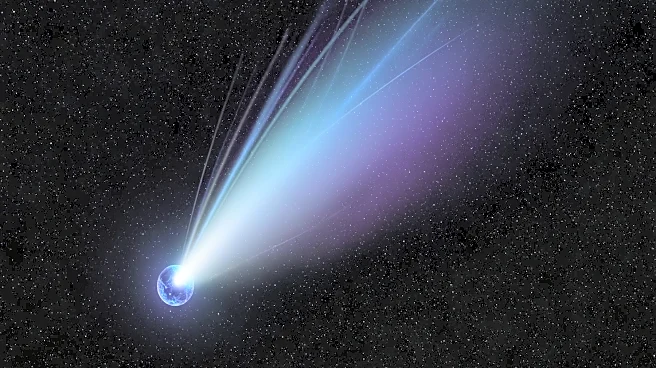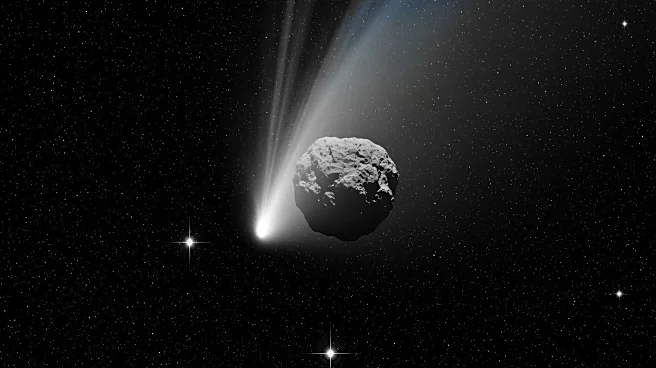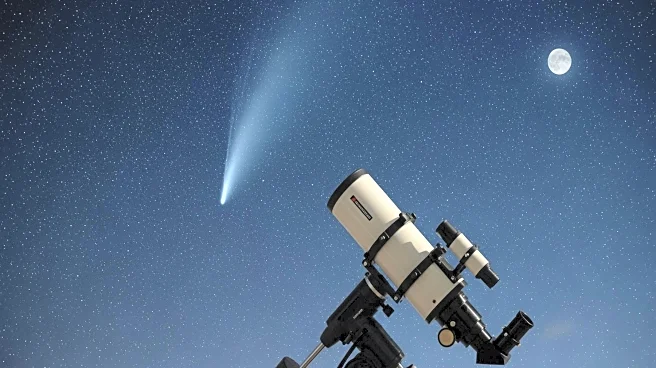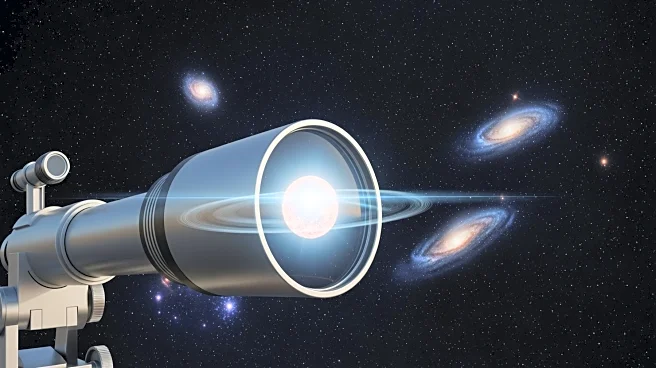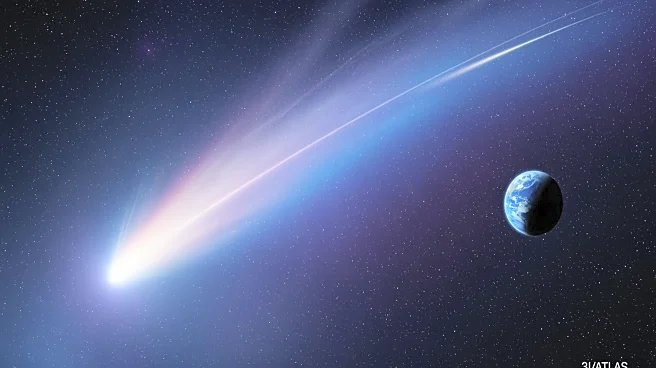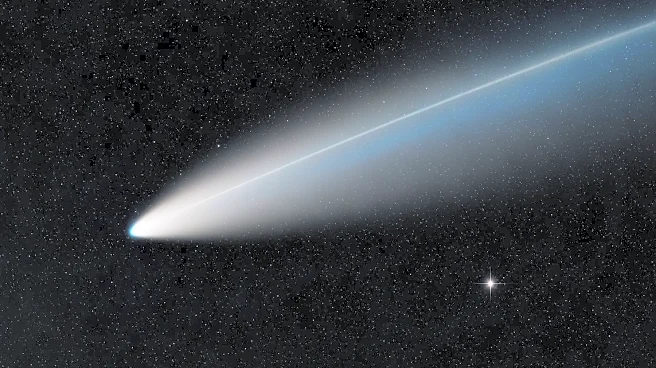What's Happening?
The interstellar comet 3I/ATLAS, the third-known object of its kind to visit our solar system, has potentially changed color for the third time, according to recent observations. Initially spotted in July
traveling towards the sun at over 130,000 mph, the comet is believed to be over 7 billion years old, having been ejected from its original star system. After a close approach to Mars in October, 3I/ATLAS became largely unobservable from Earth as it moved behind the sun. However, it is now re-emerging into view, allowing Earth-based telescopes to observe it once more. Researchers have noted a rapid brightening event and a potential shift to a blue hue, possibly due to gases like carbon monoxide or ammonia leaking from the comet. This follows previous temporary color changes to red and green, attributed to dust and chemical compositions within its coma.
Why It's Important?
The color changes observed in 3I/ATLAS are significant as they provide insights into the comet's composition and behavior, which can enhance our understanding of interstellar objects. These observations may reveal details about the comet's origin and the conditions of its home star system. The study of such ancient celestial bodies can offer clues about the early universe and the processes that govern cometary evolution. As 3I/ATLAS becomes more visible, researchers have the opportunity to gather more data, potentially leading to breakthroughs in astrophysics and cometary science. The comet's behavior could also inform future missions and the study of other interstellar visitors.
What's Next?
In the coming weeks, 3I/ATLAS will become increasingly visible to observers in the Northern Hemisphere, although it will require telescopes or binoculars for viewing. Researchers are expected to continue monitoring the comet's color and brightness changes to understand its composition and dynamics better. The comet will reach its closest point to Earth on December 19, allowing for more detailed observations. Additionally, two ESA spacecraft may pass through the comet's tail, providing further opportunities for study. These observations could lead to new discoveries about the comet's structure and the interstellar environment.
Beyond the Headlines
The study of 3I/ATLAS not only contributes to scientific knowledge but also raises questions about the ethical and cultural implications of interstellar exploration. Understanding the origins and characteristics of such ancient objects can challenge existing theories about the universe and inspire new cultural narratives about humanity's place in the cosmos. The comet's journey and transformations may also prompt discussions about the preservation of cosmic heritage and the potential for future interstellar travel.


